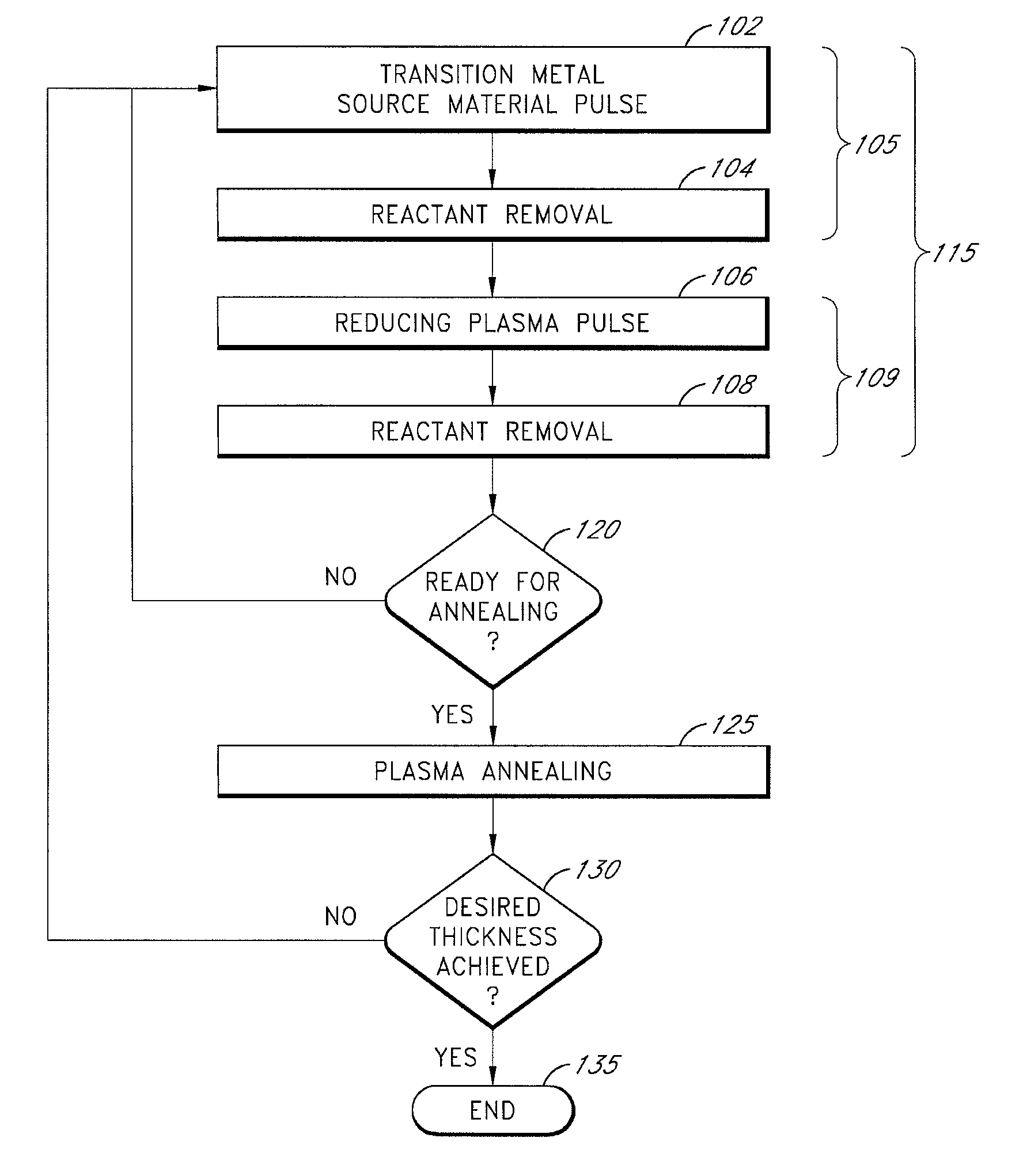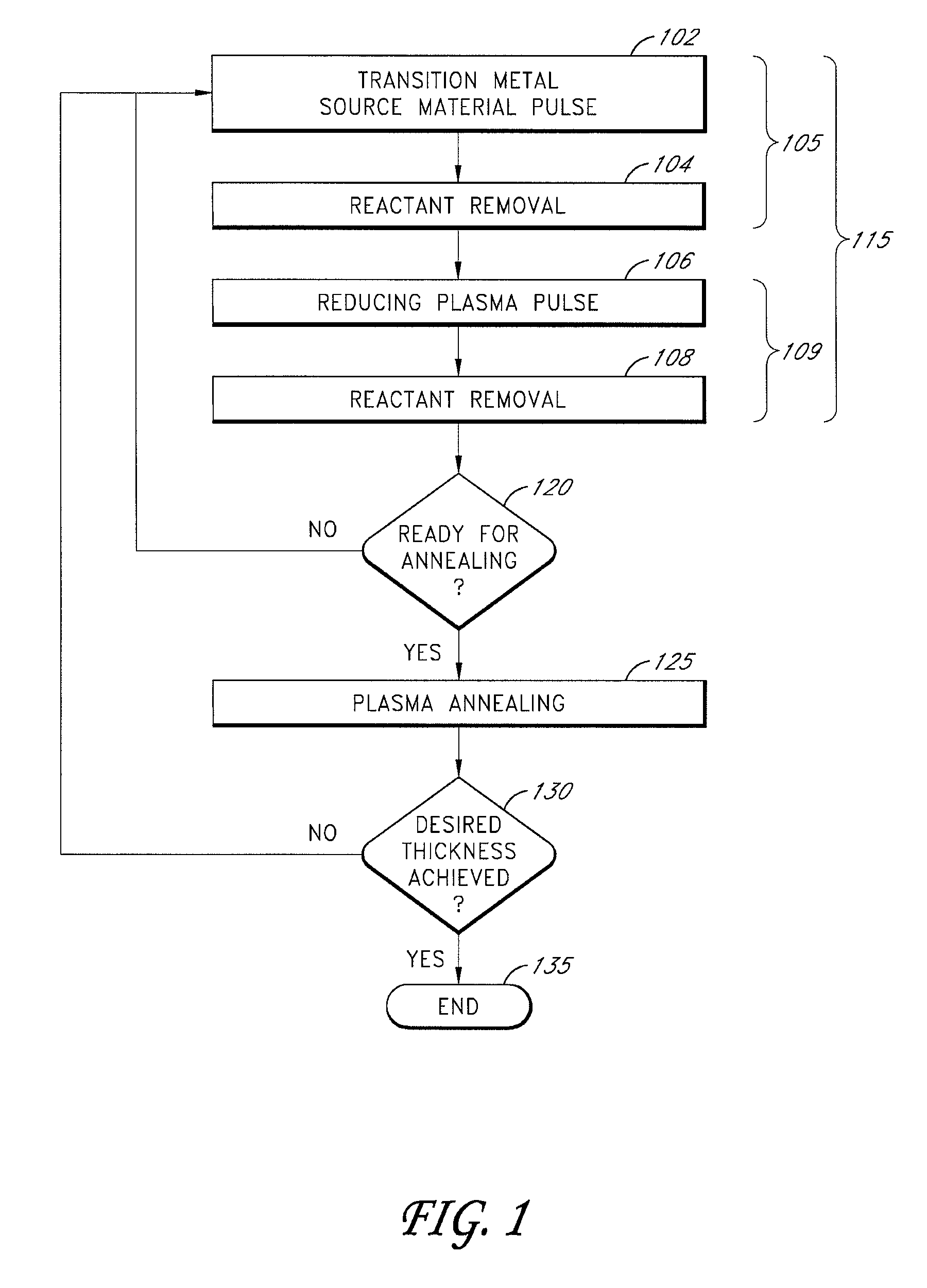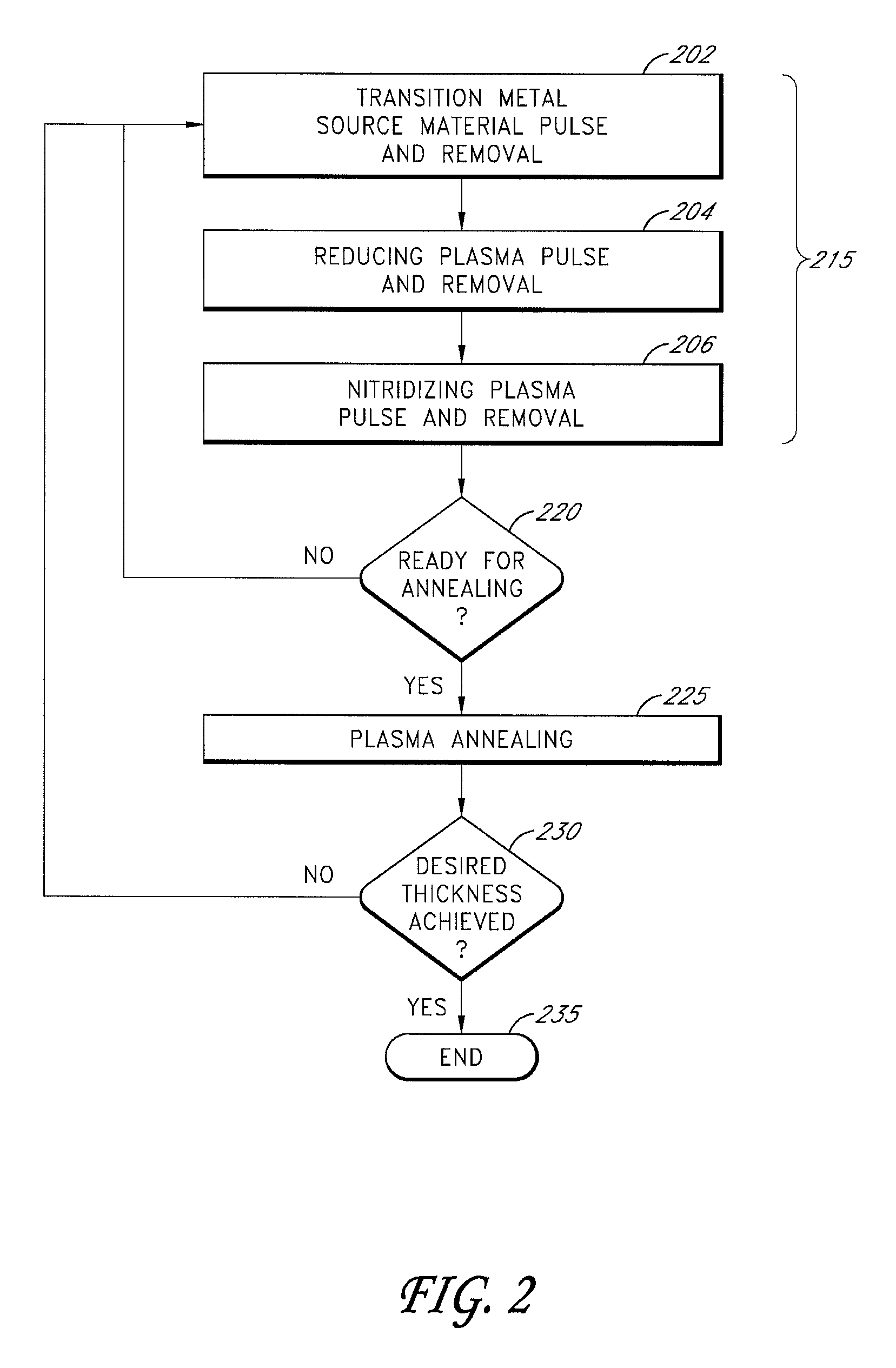Periodic plasma annealing in an ALD-type process
a plasma annealing and ald-type technology, applied in the direction of solid-state diffusion coating, crystal growth process, polycrystalline material growth, etc., can solve the problems of poor step coverage, low film conformality, high film resistivity and high impurity level, etc., to achieve low impurity level, low resistivity, and low impurity level
- Summary
- Abstract
- Description
- Claims
- Application Information
AI Technical Summary
Benefits of technology
Problems solved by technology
Method used
Image
Examples
example 1
[0070]In a first example, a film including titanium is deposited in a PEALD process. The process uses a PEALD reaction chamber power of 500 W at a pressure of 2 Torr. The process includes the following steps:
[0071]1. providing a pulse of TiCl4 to the reaction space;
[0072]2. purging excess TiCl4 and reaction by-products from the reaction space with Ar for 0.65 seconds;
[0073]3. providing plasma-excited H2 to the reaction space with Ar as an inert carrier gas for 1.6 seconds;
[0074]4. purging excess plasma-excited H2 and reaction by-products from the reaction space with Ar;
[0075]5. repeating steps 1 through 4 fifty times;
[0076]6. providing plasma-excited H2 to the reaction space with Ar as an inert carrier gas for 20 seconds; and
[0077]7. repeating steps 1-6 fourteen times.
example 2
[0078]In a second example, a film including titanium nitride is deposited in a PEALD process. The process uses a PEALD reaction chamber power of 500 W at a pressure of 2 Torr. The process includes the following steps:
[0079]1. providing a pulse of TiCl4 to the reaction space;
[0080]2. purging excess TiCl4 and reaction by-products from the reaction space with Ar for 0.65 seconds;
[0081]3. providing plasma-excited H2 and plasma-excited N2 to the reaction space with Ar as an inert carrier gas for 1.6 seconds;
[0082]4. purging and / or evacuating excess plasma-excited H2, N2, and reaction by-products from the reaction space with Ar;
[0083]5. repeating steps 1 through 4 fifty times;
[0084]6. providing plasma-excited H2 and plasma-excited N2 to the reaction space with Ar as an inert carrier gas for 20 seconds; and
[0085]7. repeating steps 1-6 fourteen times.
[0086]The example process described produced a titanium nitride film with a thickness of 191 angstroms in 46 minutes. The growth rate of the l...
example 3
[0087]In a third example, a film including titanium nitride is deposited in an ALD process. The process uses a reaction chamber at a pressure of 2 Torr. The process includes the following steps:
[0088]1. providing a pulse of TiCl4 to the reaction space;
[0089]2. purging excess TiCl4 and reaction by-products from the reaction space with Ar;
[0090]3. providing NH3 to the reaction space;
[0091]4. purging excess NH3 and reaction by-products from the reaction space with Ar;
[0092]5. repeating steps 1 through 4 fifty times;
[0093]6. providing plasma-excited H2 and plasma-excited N2 to the reaction space with Ar as an inert carrier gas for 20 seconds; and
[0094]7. repeating steps 1-6 fourteen times.
PUM
| Property | Measurement | Unit |
|---|---|---|
| thickness | aaaaa | aaaaa |
| thickness | aaaaa | aaaaa |
| thickness | aaaaa | aaaaa |
Abstract
Description
Claims
Application Information
 Login to View More
Login to View More - R&D
- Intellectual Property
- Life Sciences
- Materials
- Tech Scout
- Unparalleled Data Quality
- Higher Quality Content
- 60% Fewer Hallucinations
Browse by: Latest US Patents, China's latest patents, Technical Efficacy Thesaurus, Application Domain, Technology Topic, Popular Technical Reports.
© 2025 PatSnap. All rights reserved.Legal|Privacy policy|Modern Slavery Act Transparency Statement|Sitemap|About US| Contact US: help@patsnap.com



